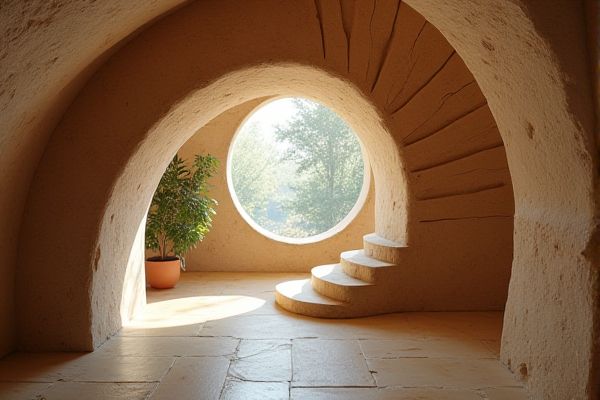
Compact spiral galaxies feature tightly wound arms with a bright central bulge, often indicating older stars and less gas, while grand spiral galaxies have well-defined, prominent arms extending far from a smaller, less pronounced core, usually rich in star formation. Discover detailed insights on how these differences impact galactic evolution and structures as you explore the rest of this article.
Table of Comparison
| Feature | Compact Spiral | Grand Spiral |
|---|---|---|
| Size | Small, space-saving design | Large, expansive layout |
| Applications | Residential, small gardens | Public parks, large landscapes |
| Visual Impact | Minimalistic, subtle | Bold, prominent |
| Construction Cost | Lower cost | Higher cost |
| Maintenance | Easy, less time-consuming | Complex, time-intensive |
| Design Style | Simple, streamlined | Detailed, intricate |
Introduction to Spiral Designs: Compact vs Grand
Spiral designs are characterized by their curvature, with compact spirals featuring tightly wound coils suited for space-efficient applications, while grand spirals exhibit larger, more open loops that enhance visual impact and flow. Compact spirals optimize spatial constraints in architectural and mechanical contexts, emphasizing functionality without compromising structural integrity. Grand spirals provide expansive, elegant forms often used in design elements requiring aesthetic prominence and dynamic movement.
Defining Compact Spiral: Features and Applications
Compact spiral designs feature tightly wound coils, offering high efficiency in limited spaces, making them ideal for applications in compact heat exchangers and precision instruments. These spirals maximize surface area while minimizing volume, enhancing thermal transfer and fluid flow in industries such as automotive and electronics cooling. Your choice of a compact spiral can significantly improve system performance when space constraints and efficient heat dissipation are critical factors.
Understanding Grand Spiral: Characteristics and Uses
Grand spirals feature larger, more widely spaced coils compared to compact spirals, providing greater flexibility and strength for heavy-duty applications. Their expansive design allows for better shock absorption and smoother movement in mechanical systems such as automotive suspensions and industrial machinery. Understanding the unique characteristics of grand spirals helps you select the appropriate type for tasks requiring enhanced durability and performance.
Key Differences Between Compact and Grand Spiral
Compact spiral galactic structures feature tightly wound arms with a higher concentration of stars and interstellar material, whereas grand spiral galaxies exhibit well-defined, sweeping arms that extend far from the core. The density wave theory explains the persistence of grand spiral patterns, creating regions of active star formation along the arms, while compact spirals often have more uniform star distribution and weaker arm contrast. Your study of galactic morphologies will benefit from understanding these key differences, as they influence galaxy evolution and star formation rates.
Space Efficiency: Compact Spiral Advantages
Compact spirals maximize space efficiency by tightly winding staircase treads around a central pole, significantly reducing the footprint compared to grand spirals. Their smaller diameter allows installation in confined areas such as small apartments or tight stairwells without compromising functionality. This efficient use of vertical space makes compact spirals ideal for optimizing limited floor areas while maintaining safe and accessible stair access.
Aesthetic Appeal of Grand Spiral Designs
Grand spiral designs offer a striking aesthetic appeal due to their expansive, sweeping curves that create a sense of movement and grandeur in architectural spaces. Unlike compact spirals, which emphasize functionality and space efficiency, grand spirals serve as focal points, often enhancing visual interest and elegance in staircases and decorative elements. Their larger scale and intricate detailing contribute to a dramatic and luxurious ambiance in both modern and classical interior design.
Cost Considerations: Compact vs Grand Spiral
Compact spiral staircases typically cost less due to their smaller footprint and reduced material requirements, making them ideal for tight spaces and budget-conscious projects. Grand spiral staircases involve higher expenses because of larger dimensions, intricate designs, and the need for custom fabrication, which increases labor and installation costs. Choosing between the two depends on balancing aesthetic impact with budget constraints and spatial availability.
Structural Integrity and Safety Comparison
Compact spirals offer enhanced structural integrity due to their tightly wound coils, which distribute stress more evenly and reduce risk of deformation under load. Grand spirals, with their larger, more open turns, may be more vulnerable to bending and less effective at shock absorption, impacting long-term safety. Your choice should prioritize compact spirals when maximum durability and consistent safety performance are critical.
Ideal Use Cases for Each Spiral Type
Compact spirals are ideal for small notebooks, planners, or journals where space efficiency and portability are essential, offering a sleek design that keeps pages securely bound without adding bulk. Grand spirals suit larger sketchbooks, portfolios, or presentation materials, providing greater page flexibility and easier turning for creative projects or professional displays. Your choice depends on balancing the need for compactness with the requirement for ease of access and page visibility.
Choosing the Right Spiral Design for Your Project
Compact spiral designs are ideal for projects requiring space efficiency and a tighter footprint, often used in residential staircases or small architectural elements. Grand spiral designs emphasize dramatic aesthetics and spaciousness, making them suitable for commercial buildings or luxury residences where visual impact is paramount. Selecting the appropriate spiral design depends on project requirements such as available space, budget, and desired architectural statement.
 homyna.com
homyna.com